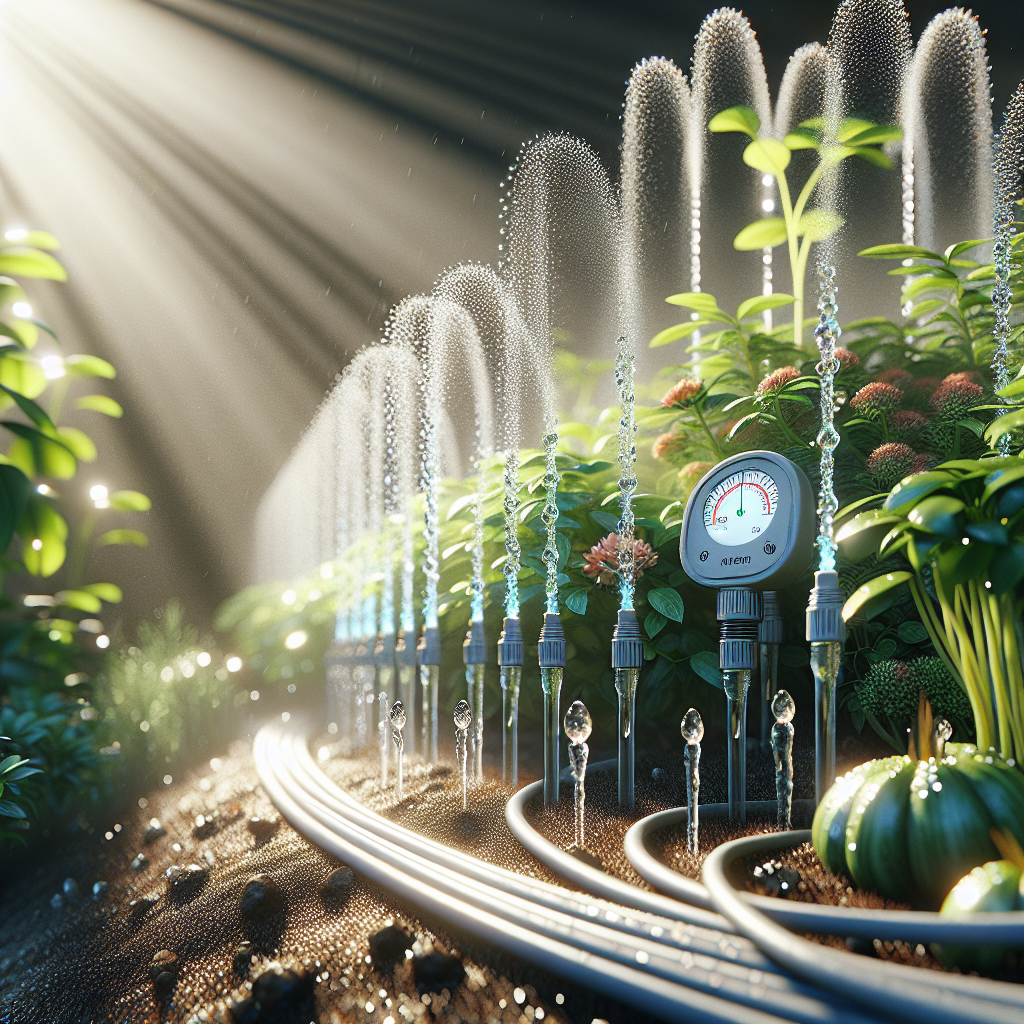Maintaining Moisture Levels with Slow Drip Watering
Are you tired of constantly having to water your plants to keep them healthy and thriving? Do you struggle with overwatering or underwatering, causing stress to your beloved greenery? Fear not, as there is a solution that can help you maintain optimal moisture levels for your plants without the hassle and guesswork – slow drip watering. This method of watering involves a slow and steady release of water directly to the roots of plants, ensuring that they receive just the right amount of moisture they need to flourish. In this article, we will explore the benefits of slow drip watering, how it works, and how you can implement it in your own garden or indoor plant collection.
**The Benefits of Slow Drip Watering**
Slow drip watering offers a multitude of benefits for both the plants and the gardener. One of the main advantages is that it helps prevent wastage of water by delivering it directly to the root zone where it is needed most. Traditional methods such as overhead watering or hand-watering can lead to water runoff and evaporation, resulting in inefficient use of this precious resource. With slow drip watering, you can ensure that every drop counts, saving both water and money in the long run.
Moreover, slow drip watering promotes healthier plant growth by providing a consistent supply of moisture to the roots. This helps prevent fluctuations in soil moisture levels that can stress plants and make them more susceptible to diseases and pests. By maintaining even moisture levels, you can encourage strong root development and lush foliage, leading to happier and more vibrant plants overall. Additionally, slow drip watering reduces the risk of overwatering or underwatering, as it allows you to control the flow rate and frequency of watering based on the specific needs of each plant.
**How Slow Drip Watering Works**
Slow drip watering systems typically consist of tubing or hoses with small emitters or drippers placed at intervals along their length. These emitters deliver water slowly and steadily directly to the root zone of plants, ensuring that they receive a consistent supply of moisture over an extended period of time. The flow rate can be adjusted by controlling factors such as water pressure or using different types of emitters with varying output rates.
To set up a slow drip watering system for your garden or indoor plants, start by selecting a suitable tubing or hose that is durable and UV-resistant to withstand outdoor conditions. Connect this tubing to a water source such as a faucet or rain barrel using a pressure regulator to ensure a consistent flow rate. Place emitters along the length of the tubing according to the spacing requirements for your specific plants – larger plants may need more emitters spaced closer together, while smaller plants may require fewer emitters placed further apart.
**Implementing Slow Drip Watering**
Once you have set up your slow drip watering system, it’s important to monitor soil moisture levels regularly to ensure that your plants are receiving adequate hydration. Use a soil moisture meter or simply stick your finger into the soil up to knuckle depth – if it feels dry, it’s time to water. Adjust the flow rate or frequency of watering as needed based on factors such as weather conditions, plant type, and growth stage.
In addition to outdoor gardens, slow drip watering can also be used for indoor plants in containers or hanging baskets. Simply install a small-scale system using micro-tubing with drippers attached directly to each pot or basket. This allows you to provide targeted watering without risking spills or overwatering on indoor surfaces.
By adopting slow drip watering techniques in your gardening routine, you can save time, conserve water resources, promote healthy plant growth, and enjoy greener surroundings all year round.
**FAQ about Slow Drip Watering**
Q: Can I use slow drip watering for all types of plants?
A: Yes! Slow drip watering is suitable for most types of plants including vegetables, flowers, shrubs, trees, and indoor houseplants.
Q: How often should I water with slow drip irrigation?
A: The frequency of watering will depend on factors such as plant type,
soil type,
weather conditions,
and seasonality.
Monitor soil moisture levels regularly
to determine when additional irrigation is needed.
Q: Can I set up a slow-drip system without any plumbing experience?
A:
Yes! Many DIY kits are available
that are easy
to install without any specialized tools
or knowledge.
Simply follow
the instructions provided with
the kit
and adjust
as needed based on
your individual gardening needs.
In conclusion,
slow-drip irrigation offers numerous benefits
for maintaining optimal
moisture levels for your precious vegetation.
By investing in this efficient
and eco-friendly technique,
you can enjoy healthier
plants,
conserve water resources,
and simplify
your gardening routine.
So why wait?
Make
the switch
to slow-drip irrigation today
and watch
your garden flourish like never before!














